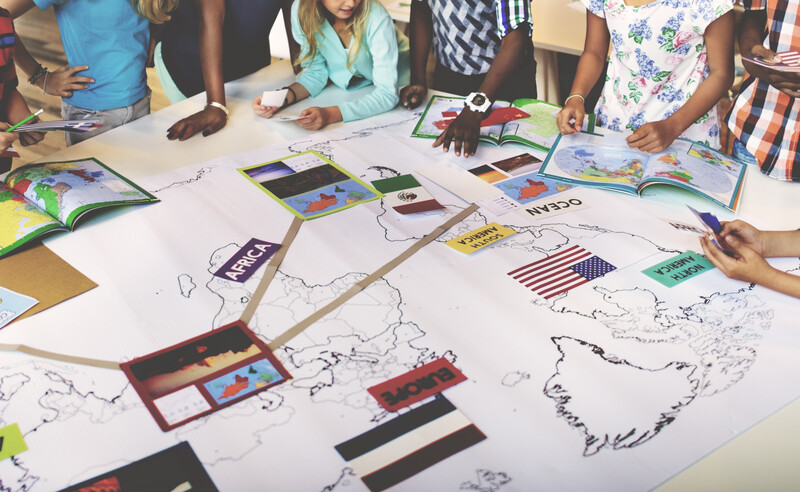As I stood on the playground, 2nd graders Elena and Laura pulled hard on my sleeve. They kept pulling, pleading, “Look, look, Anne!” In their hands was a perfect oval of ice. It was flat with concentric ovals toward the middle, and the children held it reverently. Finding ice is always a treat, but this shape was exquisite, like a giant's jewel. After I shared their awe, they turned and ran back toward the playground. Recess had ended, but they weren't heading back to their classroom. They returned quickly, triumphant. Together they had decided that their precious find would melt if they took it inside. They had agreed to put it back in its home, just as they would have restored a bird's egg to its nest.
Constructing forts, collecting rocks, and digging are ways children create their own worlds and become more acquainted with the natural world. Children thrive when they have some choice in their day and time to create games and stories and to play. In addition, trying out new physical skills can be the highlight of the day. A kindergartner beams at being able to cross the monkey bars. A 3rd grader dances in celebration when he catches the football, and a 5th grader enjoys the camaraderie of a basketball game or playing gold rush with a teacher. The outdoors is a classroom of the students' own construction. The time spent in this classroom, however, is shrinking for many children.
Losing Recess
A recent U.S. Department of Education report states that 14 to 18 percent of U.S. children in grades 1–6 get 15 minutes or fewer of recess a day (National Center for Education Statistics, 2007). Forty percent of schools have reportedly eliminated some recess time to concentrate on academics (Clements, 2000). Under No Child Left Behind, preparing students for benchmark tests has become a primary goal of elementary school teachers. Life skills learned in social interactions, the health benefits of physical exercise, and exposure to the outdoors have been sidelined.
Parent groups are leading the effort to preserve recess. A campaign called Rescuing Recess (www.rescuingrecess.com) provides information on the benefits of recess and encourages children to write to local and state officials to support keeping recess. The Washington State Parent Teacher Association (2006) chose recess as one of its top five issues to address in the coming year. The American Association for the Child's Right to Play (www.ipausa.org) protects and promotes the right to play. Benefits of Recess
Research tells us that students are more attentive and less restless after a recess break. Pellegrini and Davis (1993) found that kindergartners and 2nd and 4th graders were less attentive when there was a long period before a recess break, and the children's attention decreased as they spent more time without a break. Brain research also shows that when learning is broken up into short periods, recall improves (Dempster, 1988; Toppino, Kasserman, & Mracek, 1991). Children who are more active or struggle with attention disorders suffer when deprived of recess (Silver, 2005). These same children are often likely to lose recess because of their disruptive behavior, further exacerbating the problem.
A second reason for recess is the powerful experience it provides in social relationships. Children have freedom to practice making and keeping friends. Pellegrini, Kato, Blatchford, and Baines (2002) found that primary school children's reciprocal social play predicts their social competence one year later.
Skeptics point out that the playground can be the site of aggression, teasing, and bullying. Children often do argue about making fair teams or whether someone was “out.” This give and take is part of their play and prepares them for adult negotiation. Our job as teachers is to calmly remind students to keep the conflict within bounds and find a solution everyone can agree to without resorting to aggression. Unfortunately, adults in some schools must supervise so many children on the playground at once that they can neither teach these conflict-resolution skills nor intervene to prevent disputes from escalating.
Physical health is the third reason we need recess. The U.S. Department of Health and Human Services recommends that all children over 2 years old get 60 minutes of moderate to vigorous exercise on most days of the week (Council on Physical Education for Children, 2001). The percentage of school-age children who are obese has doubled in the past 30 years (Ogden, Flegal, Carroll, & Johnson, 2002). According to the American Academy of Pediatrics, over 15 percent of children in the U.S. are overweight or obese, and 80 percent of obese youth become obese adults (Council on Sports Medicine and Fitness & Council on School Heath, 2006). The National Association for Sport and Physical Education cautions schools against allowing children to be inactive for longer than two hours (Council on Physical Education for Children, 2001).
Our children need the outdoor fun, choices, and time to invent that recess provides. Recess does not require elaborate funding, but we must support it with good supervision and a belief that the social and physical well-being of our children is worthy of our time and nurture.




